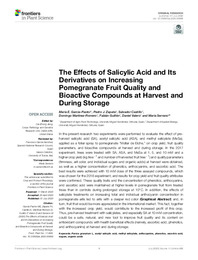Por favor, use este identificador para citar o enlazar este ítem:
https://hdl.handle.net/11000/31183Registro completo de metadatos
| Campo DC | Valor | Lengua/Idioma |
|---|---|---|
| dc.contributor.author | García Pastor, María Emma | - |
| dc.contributor.author | Zapata, Pedro J | - |
| dc.contributor.author | Castillo, Salvador | - |
| dc.contributor.author | Martínez-Romero, Domingo | - |
| dc.contributor.author | Guillén Canelo, Fabián | - |
| dc.contributor.author | Valero, Daniel | - |
| dc.contributor.author | Serrano Mula, María | - |
| dc.contributor.other | Departamentos de la UMH::Biología Aplicada | es_ES |
| dc.date.accessioned | 2024-02-07T07:59:56Z | - |
| dc.date.available | 2024-02-07T07:59:56Z | - |
| dc.date.created | 2020-07-01 | - |
| dc.identifier.citation | Frontiers in Plant Science, Volume 11 - 2020 | es_ES |
| dc.identifier.issn | 1664-462X | - |
| dc.identifier.uri | https://hdl.handle.net/11000/31183 | - |
| dc.description.abstract | In the present research two experiments were performed to evaluate the effect of preharvest salicylic acid (SA), acetyl salicylic acid (ASA), and methyl salicylate (MeSa), applied as a foliar spray to pomegranate “Mollar de Elche,” on crop yield, fruit quality parameters, and bioactive compounds at harvest and during storage. In the 2017 experiment, trees were treated with SA, ASA, and MeSa at 1, 5, and 10 mM and a higher crop yield (kg tree1 and number of harvested fruit tree1) and quality parameters (firmness, aril color, and individual sugars and organic acids) at harvest were obtained, as well as a higher concentration of phenolics, anthocyanins, and ascorbic acid. The best results were achieved with 10 mM dose of the three assayed compounds, which was chosen for the 2018 experiment, and results for crop yield and fruit quality attributes were confirmed. These quality traits and the concentration of phenolics, anthocyanins, and ascorbic acid were maintained at higher levels in pomegranate fruit from treated trees than in controls during prolonged storage at 10 C. In addition, the effects of salicylate treatments on increasing total and individual anthocyanin concentration in pomegranate arils led to arils with a deeper red color (Graphical Abstract) and, in turn, fruit that would be more appreciated in the international market. This fact, together with the increased crop yield, would contribute to the increased profit of this crop. Thus, pre-harvest treatment with salicylates, and especially SA at 10 mM concentration, could be a safe, natural, and new tool to improve fruit quality and its content on antioxidant compounds with health beneficial effects (namely, ascorbic acid, phenolics, and anthocyanins) at harvest and during storage. | es_ES |
| dc.format | application/pdf | es_ES |
| dc.format.extent | 14 | es_ES |
| dc.language.iso | eng | es_ES |
| dc.publisher | Frontiers Media | es_ES |
| dc.rights | info:eu-repo/semantics/openAccess | es_ES |
| dc.rights | Attribution-NonCommercial-NoDerivatives 4.0 Internacional | * |
| dc.rights.uri | http://creativecommons.org/licenses/by-nc-nd/4.0/ | * |
| dc.subject | punica granatum L | es_ES |
| dc.subject | acetyl salicylic acid | es_ES |
| dc.subject | methyl salicylate | es_ES |
| dc.subject | anthocyanins | es_ES |
| dc.subject | phenolics | es_ES |
| dc.subject | ascorbic acid | es_ES |
| dc.subject | sugars | es_ES |
| dc.subject | organic acids | es_ES |
| dc.subject.classification | Fisiología Vegetal | es_ES |
| dc.subject.other | CDU::5 - Ciencias puras y naturales::57 - Biología | es_ES |
| dc.title | The Effects of Salicylic Acid and Its Derivatives on Increasing Pomegranate Fruit Quality and Bioactive Compounds at Harvest and During Storage | es_ES |
| dc.type | info:eu-repo/semantics/article | es_ES |
| dc.relation.publisherversion | https://doi.org/10.3389/fpls.2020.00668 | es_ES |

Ver/Abrir:
fpls-11-00668.pdf
10,21 MB
Adobe PDF
Compartir:
 La licencia se describe como: Atribución-NonComercial-NoDerivada 4.0 Internacional.
La licencia se describe como: Atribución-NonComercial-NoDerivada 4.0 Internacional.
.png)